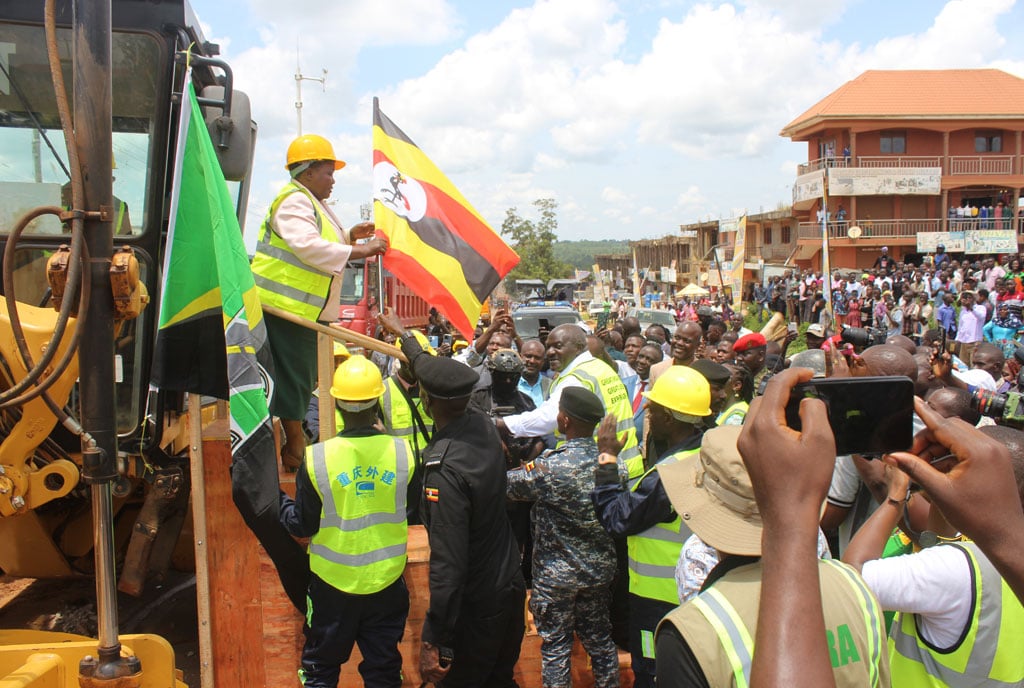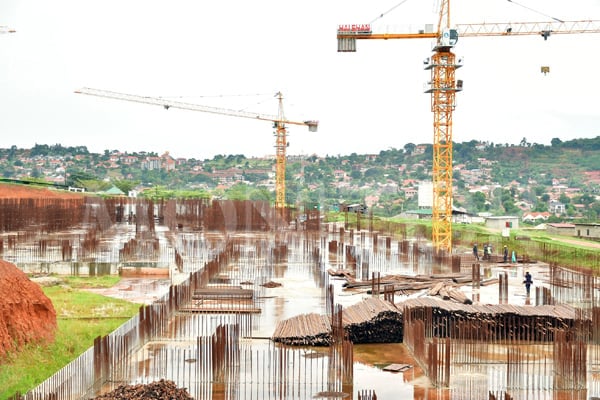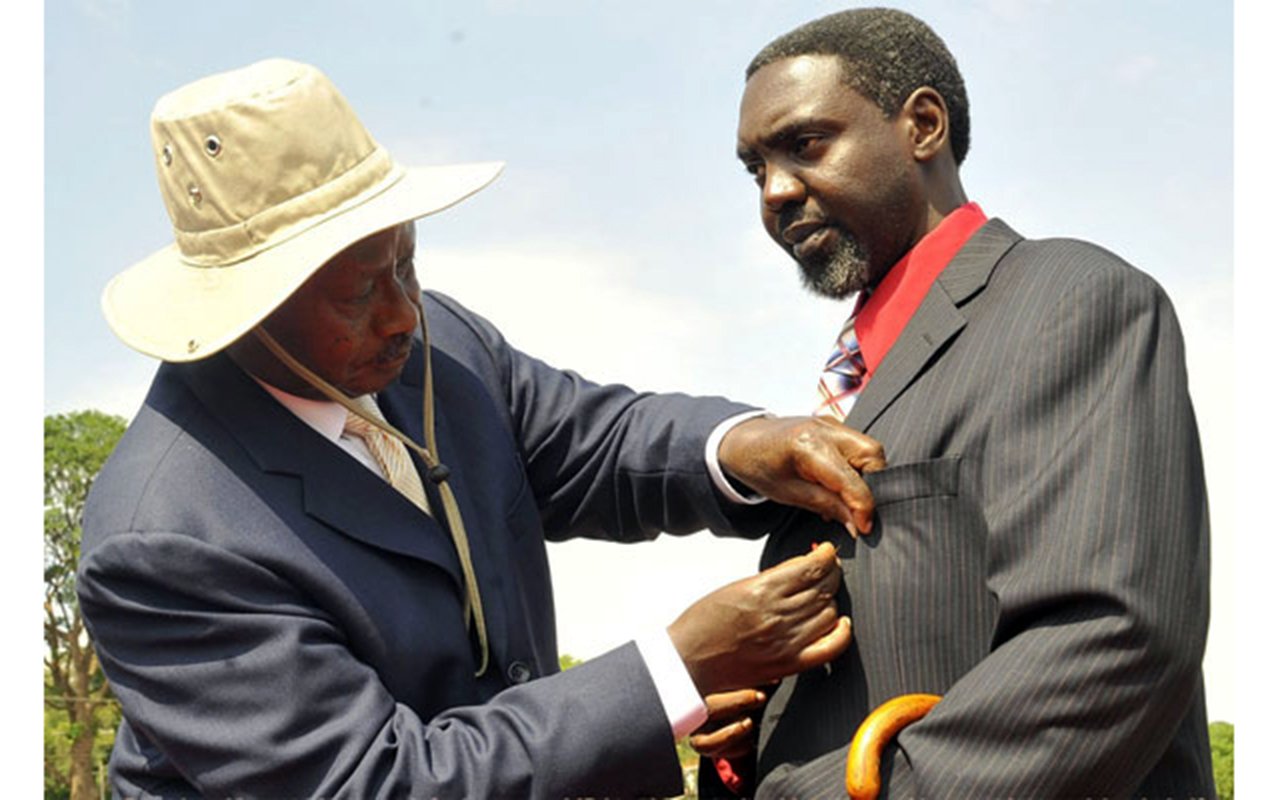No compensation as works on Masaka-Mutukula Road start

Prime Minister Robinah Nabbanja flagging off construction works for Masaka-Kyotera-Mutukula highway on March 20, 2024. PHOTO/GERTUDE MUTYABA
What you need to know:
- There will be no compensation for property owners within the road reserve because they are considered encroachers, and the new road design aims to avoid sharp bends and maintain high standards.
Government has reiterated that there will be no compensation for property owners settling within the road reserve on the Masaka-Kyotera–Mutukula highway.
Several developers have in the last four years been erecting both commercial and residential buildings within the demarcated route for the project in anticipation of hefty compensation from government.
According to Works and Transport Minister, Gen Edward Katumba Wamala, the road will be of high standard and the new design eliminates sharp bends.
“The planned roadworks will be within the existing road reserve, and whoever will be affected will be considered as an encroacher,” the minister said during the official commissioning of road works in Kyotera Town on Wednesday. The Prime Minister, Ms Robinah Nabbanja, presided over the function.
Gen Wamala said a few residents with structures outside the road reserve could be considered for compensation.
“ The new design focuses on avoiding sharp bends and it is only a few affected individuals who will get some money for this loss,” he said.
Chongqing International Cooperation (CICO) has been contracted to do the work which will last 40 months.
“In our agreement with the contractor, we have agreed that he will work for two years [pre-financing arrangement] as we look for money to pay him,” the minister said.
Upon completion, the minister said street lights will be installed in every township on the highway.
Under the same agreement, the contractor will also work on the 11km Nyendo-Villa Maria Road, Kasijjagirwa Barracks Road ( 3. 5km ) and Industrial Hub ( 3.5km) at a tune of Shs629b,according to Gen Wamala.
Ms Nabbanja asked the contractor to give unskilled manual work to local youth in the district but cautioned them against doing shoddy work.
“It will be unfair to ferry workers from other districts yet there are jobs which our local people here can do,” she said.
Currently, the 89.5 km road is in poor shape and motorists from Masaka take close to two hours to connect to Mutukula border post, a journey that used to take 45 minutes before.
The worst part of the road is the section between Kyotera and Mutukula border town which leaders say has so much hindered traders’ movements, especially the ones carrying cargo.
Mr John Paul Mpalanyi, the Kyotera County MP, said fixing the road is timely since it facilitates trade between Uganda and Tanzania.
“As politicians, we have been facing a lot of pressure from our electorates to explain why this essential transportation artery connecting us to Tanzania and other countries in the south continues to be in a poor state. This is the only way we can justify our relevancy as leaders,” he said.
Background
At least 3,500 Ugandans across 74 districts are reported to have drowned over a two–and–a–half–year period, according to a 2021 report by Makerere University’s School of Public Health. This translates into 1,400 deaths per year.
Last August, Uganda recorded one of the most fatal water accidents in five years, where 16 passengers perished near Nsazi Island in Mukono District.
The wooden vessel, which was travelling from Kalangala to Kasenyi LanThere has been a remarkable increase in the volume of transit cargo through Mutukula borderpost ever since it became a one–stop borderpost, which operates 24 hours daily since 2017.
For seven years now, transit goods, passengers, travellers and exports exiting through Mutukula to either Tanzania or Uganda, stop once for clearance by immigration and customs officials.
The Masaka-Kyotera-Mutukula road was built nearly six decades ago to link and promote trade ties and cooperation between Uganda, Tanzania, and the rest of the East African partners.
The Masaka-Kyotera section (44.2km) was constructed in 1965 and in 2010 it received some periodic maintenance while the Kyotera-Mutukula section (45.3km) was upgraded to double bituminous surface dressing standard in between 2000 and 2003.
According to government’s plan, the contractor is expected to reconstruct the road with a lane width of 3.5m and 2.0m paved shoulders, 3.5m parking lanes towards the border to accommodate parking for the heavy trucks and 2.5m paved walkways.




